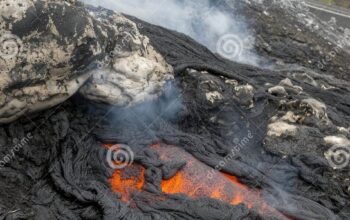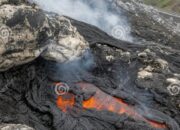Environmental science stands as a kaleidoscopic lens, illuminating the intricate tapestry of interrelations between humanity and the natural world. As young scholars embark upon the journey of understanding ecological dynamics, the query arises: at what stage in academic life should one delve into the realm of environmental science? This exploration is not merely about selecting a course; it is about sowing the seeds for an enduring passion for the environment and the myriad of factors that influence its well-being.
Traditionally, environmental science is introduced at the high school level, often as part of a curriculum designed to foster awareness and stewardship among students. Engaging with this field during the formative years of secondary education can be likened to planting a sapling in fertile soil, wherein students cultivate a foundational knowledge of ecological principles. Typically, courses are available in grades 11 and 12, where the maturity of students aligns with the complexity of the subject matter.
As pupils transition towards the final years of high school, they possess a developing critical acumen, akin to the budding leaves of spring. This is an opportune moment to engage with environmental science, a field characterized by its multidisciplinary nature—drawing from biology, chemistry, geography, and physics. Such an amalgamation enriches students’ understanding and equips them with the analytical tools necessary to dissect contemporary environmental issues, ranging from climate change to biodiversity loss.
It is paramount to understand that the academic environment surrounding the introduction of environmental science can vary dramatically between educational institutions. Some schools might offer a standalone course titled ‘Environmental Science,’ while others may embed the subject within broader science curricula. Here, students might encounter units focusing on ecology, sustainable practices, and human impact on the environment interwoven with general scientific principles.
For pupils contemplating an early onset of their environmental studies, a proactive approach encompasses engaging in extracurricular activities related to ecology. Joining environmental clubs, participating in beach clean-ups, or attending conservation workshops can lay the groundwork for academic endeavors. Such initiatives serve as a prelude, providing real-world context and igniting a fervent interest before formal education begins.
Moreover, it is essential to acknowledge that environmental science is not merely a high school endeavor; its allure often extends into the sphere of middle school education. In grades 6 through 8, students may engage in simplified versions of environmental concepts through project-based learning and inquiry-based activities. Here, the course may be less about rigorous scientific methodology and more about instilling a sense of responsibility and awareness regarding environmental stewardship. This stage can be viewed as nurturing a tender shoot, encouraging curiosity and engagement with the natural world.
In examining the structure of high school environmental science courses, two distinct approaches emerge. Some curricula adopt a problem-based learning philosophy, where students are challenged to confront real-world issues and propose innovative solutions. This pedagogical style is characterized by critical thinking and collaborative learning, which can be riveting for intellectually curious students. In contrast, other curricula may emphasize a more traditional model, focusing on core concepts and theoretical frameworks before advancing to practical applications. Each approach carries unique merits and caters to diverse learning styles.
For those who have already traversed the initial academic stages, embarking on undergraduate studies heralds the opportunity for more profound exploration. Universities and colleges offer a rich tapestry of programs specializing in environmental science, often incorporating rigorous research components. Here, the budding academic may engage in field studies, laboratory analyses, and internships, each experience deepening one’s understanding and appreciation of the complexities inherent in environmental systems. The transition from the high school to the university level parallels the metamorphosis of a caterpillar into a butterfly—each stage contributing uniquely to the overarching narrative of environmental science.
Transitioning to this advanced level of education necessitates a commitment to lifelong learning, as the discipline continually evolves in response to emerging data and societal challenges. As scholars delve deeper into their studies, they may pursue particular facets of environmental science—conservation biology, environmental policy, or renewable energy—aligning their academic pursuits with their personal passions and professional aspirations.
Furthermore, while individual academic journeys can diverge significantly, the importance of mentorship cannot be overstated. Establishing connections with professors, joining academic societies, and engaging in networking opportunities serve to enhance the learning experience and foster a sense of community within the field. This collegial ambiance is akin to a sprawling interwoven network of mycelium facilitating growth and cooperation among diverse organisms—collectively nurturing the overarching health of the ecological web.
In conclusion, the question of “What grade do I take environmental science in?” encompasses far more than a mere selection of an academic class. It is an odyssey of intellectual exploration and personal growth, beginning in middle school or high school and culminating in vibrant, multidisciplinary pursuits at the undergraduate level and beyond. Each educational stage meticulously prepares students, embracing them in an ethos of empathy and stewardship towards the Earth. The journey into environmental science is characterized not just by the accumulation of knowledge but by the cultivation of an enduring relationship with the planet—one that is ripe with the potential for innovation and transformative change.












